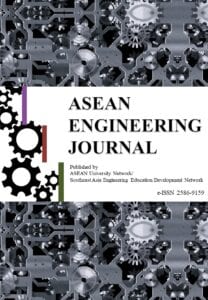SWAT MODEL FOR ASSESSMENT OF CLIMATE CHANGE AND LAND USE/LAND COVER CHANGE IMPACT ON PHILIPPINE SOIL LOSS AND EXPLORATION OF LAND COVER-BASED MITIGATION MEASURES: CASE OF CAGAYAN RIVER BASIN
DOI:
https://doi.org/10.11113/aej.v3.15527Abstract
As a climate hotspot, the Philippines is vulnerable to worst manifestations of climate change (CC) including severe soil loss rates, which are prevalent in the mountainous areas. Deforestation and land use/land cover (LULC) conversions may also aggravate the ill-effects of CC as forest areas are converted to built-up and vegetation types other than forest. This paper presents the application of Soil and Water Assessment Tool (SWAT) model integrated with Remote Sensing (RS), and Geographic Information System (GIS) to quantify the impact of CC and LULC change on Philippine soil loss rate. The model is applied in the country’s largest river basin—the Cagayan River Basin (CRB). Remotely-sensed data such as the Landsat TM and ETM+ imageries and 90-m resolution Shuttle Radar Topography Mission-Digital Elevation Model (SRTM-DEM) were utilized to derive the LULC maps and DEM of the study area. Meanwhile, ArcGIS™ provided the platform for ArcSWAT interface of the SWAT model and for input, analysis, and display of spatial data. Evaluation of model performance showed that SWAT can realistically model flow and sediment discharge dynamics in the CRB as supported by satisfactory values of four statistical measures of model efficiency during model calibration and validation of mean daily river discharge and sediment yield. The calibrated model was rerun to incorporate projected variations in several climatic parameters (e.g., temperature and rainfall) considering the A1B SRES scenario and LULC change. The simulations incorporating CC and LULC change data have shown increases in soil loss rates for the CRB as high as 37% compared to the base scenario. Meanwhile, simulations which incorporate land cover-based mitigation measures have indicated successful reduction in soil loss rate by 33%.
















